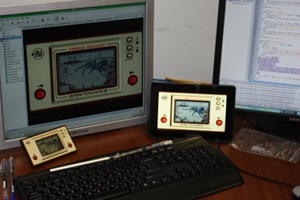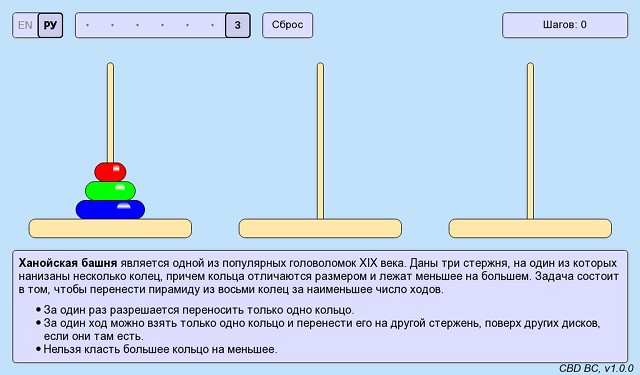PlayBook Development with Native SDK
 I wanted to share my personal vision of the development situation for the BlackBerry PlayBook and talk a little about my experience of using the Native SDK. It so happened that I have been working with the QNX RTOS for several years, which has become the basis for the PlayBook operating system - the BlackBerry Tablet OS. I must say that the PlayBook platform itself, like QNX, I like. However, I will not agitate anyone for or against, but just tell you what and how.
I wanted to share my personal vision of the development situation for the BlackBerry PlayBook and talk a little about my experience of using the Native SDK. It so happened that I have been working with the QNX RTOS for several years, which has become the basis for the PlayBook operating system - the BlackBerry Tablet OS. I must say that the PlayBook platform itself, like QNX, I like. However, I will not agitate anyone for or against, but just tell you what and how.Probably worth starting with the fact that now there are two versions of the BlackBerry Tablet OS: the current 1.0.x and beta version 2.0.0.x. I managed to work with two versions. The second version is now available for testing and should be released in mid-February next year. It will include many nice changes. Among other things, declared support for Android applications . There are, of course, a number of limitations, but the authors of most applications can easily repack their applications to work on the PlayBook. I think this is quite a “tasty” opportunity. Applications developed for the first version (including with the help of the NDK) work fine in the second.
In addition to the already existing two versions of the operating system for the PlayBook, the release of the BBX platform is expected next year. BBX platform is also based on QNX and will be used when developing not only tablets, but also all new BlackBerry smartphones. It is very likely that the PlayBook is a step from the BlackBerry OS to BBX. But it will be next year, but for now let's consider what is already now.
')
For BlackBerry Tablet OS versions 1 and 2, various development tools are available. First, it is WebWorks , which allows you to develop applications using HTML5 technology. Secondly, it is Adobe AIR , which allows you to develop applications in Flash. And, of course, the most interesting and closest development tool for me is the Native SDK (NDK) . Why do I like NDK? Most likely, because the IDE uses the familiar Momentics (built on Eclipse), and even more because the NDK allows you to "see" QNX in the tablet. Well, and perhaps the most obvious - the greatest flexibility and functionality is present in the NDK. For example, using the Native SDK, you can write extensions for Adobe AIR.
All the development tools for the PlayBook have their own distinctive features and, as I think, did not appear just like that. In addition to the obvious purpose of each SDK (which I consider to attract developers who are familiar with a particular technology), they also allow other tasks to be solved. Perhaps it is worth to talk about this in more detail.
WebWorks is a kind of bridge from the BlackBerry OS (this is what is currently running on smartphones) to BBX, because it allows you to develop for both smartphones and tablet. There are Java-based development tools for BlackBerry smartphones, but they are not on the PlayBook. So WebWorks is the only common development tool for BlackBerry platforms.
Tools for transferring Android applications. In my opinion this is a properly made move. One of the drawbacks of the PlayBook is the small number of applications. This is true, compared to the app stores for iOS and Android for the BlackBerry PlayBook applications are noticeably less. This is understandable, because the PlayBook platform appeared later and is still evolving. On the other hand, who needs hundreds of thousands of applications, four fifths of which are outright nonsense? It seems that not everyone understands this. Maybe not everyone who makes this argument has a tablet? But not the point. The main thing is that with the tools for transferring Android applications, you can expect a large number of applications from the Android platform to appear on the PlayBook.
Native development tools (NDK) will attract developers who are familiar with various platforms. With the release of NDK, a repository on Github was opened with various projects. Very interesting Cocos2D and Qt for BlackBerry. NDK’s capabilities are underlined by a number of ported open source projects, such as, for example, Open Transport Tycoon Deluxe, Battle for Wesnoth, and DosBox. It seems that some of the developers for the Nokia platform will switch to BlackBerry, since Nokia itself has taken the benchmark on Windows Mobile. We also have a good experience in developing Qt / QML applications for the PlayBook (more on this later). Based on our research, we have prepared a guide to build Qt applications for the PlayBook .
The study of the capabilities of the PlayBook platform led to the fact that we published several applications in App World (this is the BlackBerry app store). I already wrote about the most interesting application on Habré - “Secrets of the Ocean” . The most popular game in this series is “Well, wait a minute!”, Which we are also going to implement on the PlayBook. The Mystery of the Ocean app is developed on AIR and allows us to state with confidence that the PlayBook supports this technology well. Unfortunately, not all tasks can be solved on Adobe AIR, although this is one of the best tools for developing HMI . Therefore, we began to deal with the Native SDK as soon as it became available.

The next step was to develop an application for determining the region by its number on the car sign .

This application is already fully developed on the NDK, and to be more precise, on QML . Information and images taken from Wikipedia. The application itself is not something complicated or unique, but it allowed us to make sure that Qt and QML can be successfully used in the development for the PlayBook platform. This could not fail to please us, and, as a result, we released the second application in QML.
The Tower of Hanoi is a popular 19th century puzzle. Surely you are familiar with this game, in which you need to shift the rings that make up the pyramid from one rod to another. The game will allow you to pass the time or teach children logical thinking.

This application applied some effects such as scaling and rotation, as well as animation. The PlayBook showed itself from the best side and everything moved no worse than on a laptop with Linux. All listed applications are available for free in App World.
By the way, it's worth telling about the development tools that I used for QML applications. It seems to me that this can also be interesting. My working laptop with ArchLinux and KDE4 was used as a tool machine, instead of IDE a text editor Kate was chosen, which has quite tolerable syntax highlighting of QML and is autocompletion. And, which is the most convenient when developing QML applications, it is not required to run it on the device each time; it is enough to use qmlviewer under Linux. Very comfortably.
Perhaps it is time to conclude. The PlayBook platform is ready to develop applications for it. The output of the Native SDK and the publication of open source projects on Github gave a particularly strong impetus. But then the platform will only get better - it is expected the official release of Tablet OS 2.0 in February and the release of the BBX platform in spring or summer. RIM takes the tablet market seriously and will expand its presence on it. This is also indicated by the expected PlayBook 4G in the near future , and the expected release next autumn of a ten-inch version of the PlayBook with the working title Black Forest.
Source: https://habr.com/ru/post/133597/
All Articles